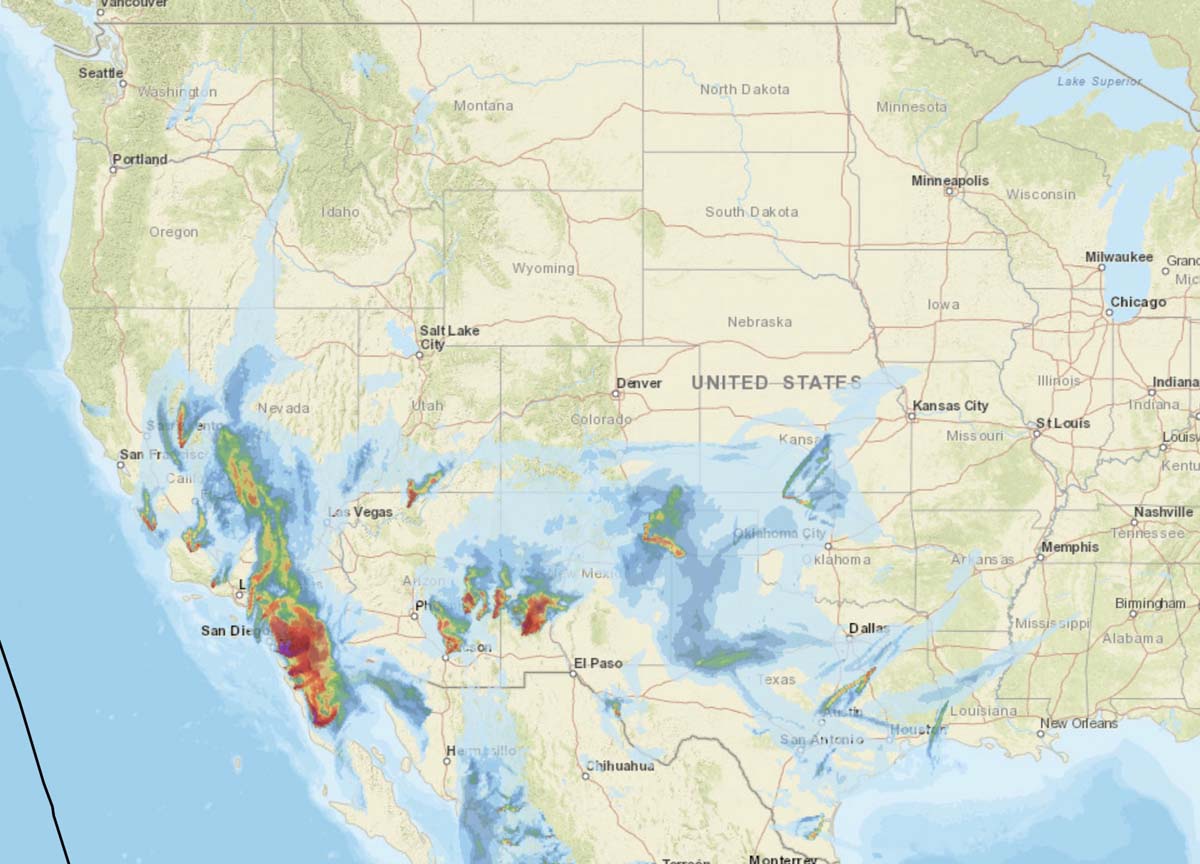
Not only are the wildfires in Arizona and New Mexico putting a great deal of smoke into the atmosphere, but several large fires in Mexico east of Tijuana are also contributing.
News and opinion about wildland fire
Areas in California, Nevada, Arizona, and New Mexico are heavily affected
Topics included testing and the availability of personal protective equipment, as well as the availability of air tankers
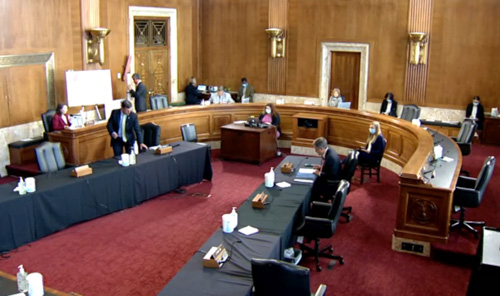
At a hearing today before the Senate Committee on Energy and Natural Resources two of the four witnesses and several of the Senators appeared remotely. With the announced topic being wildfire management in the midst of the COVID-19 pandemic, three Senators expressed strong opinions about testing and personal protective equipment (PPE) being available for all firefighters.
In his prepared testimony, Norm McDonald Director of Fire and Aviation for the Alaska Division of Forestry, explained that all fire personnel upon arrival in Alaska are being asked to take a COVID-19 test.
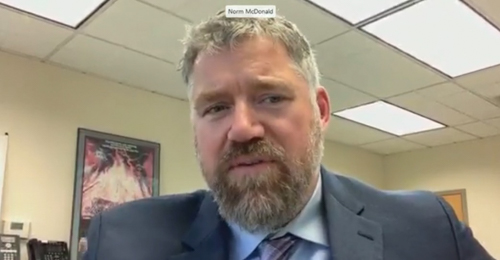
“For federal employees,” he said,”this is voluntary, but an expectation memo is attached to each resource order outlining the expectation along with other mitigation measures that are being employed. Testing occurs at either of the two major jetports upon arrival, and results are available in 24-48 hours. The incoming staff are asked to quarantine at their billets until test results are provided. Provisions have been made for urgent demands for resources on the fireline, a test still occurs, but staff deploy as needed. Any positive results will be notified and subsequently isolated and cared for while contact tracing occurs.”
The policy in Alaska set the stage for discussions about testing being available for all federal firefighters.
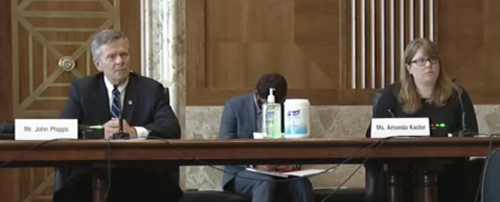
Amanda Kaster, the Department of the Interior’s Acting Deputy Assistant Secretary for Land & Minerals, said all DOI firefighters are not being tested, adding, “[F]irefighter safety is truly paramount for the Department, and as this fire season continues we are going to continue to explore ways to better protect our firefighters.” (at 1:05:30 in the video recording of the hearing)
Ranking Member Senator Joe Manchin of West Virginia made it clear that he and the “rest of the committee” felt that testing was necessary for all firefighters. “We want mandatory testing going into the fire season.”
Senator Manchin brought this up again in a discussion with the other Senators at 1:08:43, saying, “Testing for firefighters is imperative.”
“Madam Chair, I want to begin by saying I think you and Senator Manchin are making a lot of extraordinarily important points,” said Oregon Senator Ron Wyden (at 1:13:00). “I’ve been listening to what the agencies are saying in Washington, D.C. this morning, not the folks out in the field,” referring to witnesses from the U.S. Forest Service and the Department of the Interior. “They’re talking about ‘exploring’ these critical issues, they’re using the words ‘considering’, ‘consulting’. I don’t see any urgency needed to respond in a uniform, practical way to what you and Senator Manchin are talking about. So I really appreciate you trying to point out that fire season is happening NOW [hitting the table], COVID is happening NOW [hitting the table again], and the idea that we’re going to hear about a lot of ‘considering’ and ‘consulting’ just is not going to protect our courageous firefighters nor is it going to protect folks in the rural West.”
Since Forest Service Chief Vicki Christiansen and Director of Fire and Aviation Shawna Legarza did not walk down the street to attend the hearing, they sent John Phipps, the FS Deputy Chief for State and Private Forestry in their place. When asked if firefighters would be covered by Workmen’s Compensation after contracting COVID-19 on the job, he said it will be “considered on a case by case basis by the Department of Labor for coverage.”
Senator Manchin responded, “We’re going to do what we can in this committee to make sure we get clarity to that so these people do not have to worry, they’re not struggling, and their families do not have to worry. You were told by DOL. Maybe we can get to DOL. We’ll get them here.”
Senator Martin Heinrich of New Mexico said some of his individual constituents, firefighters, have told him that they are not being provided with sufficient PPE.
He asked, “Are fire personnel currently limited in the number of masks, for example, that they are allowed per week?”
“I’d say no,” responded Mr. Phipps. “We have in our interagency checklist for mobilization for ordering or receiving adequate PPE is one of the requirements. And so, if they don’t have adequate equipment, personal protective equipment, they’re not going to be on the fire.”
“OK. So, I will follow up,” said Senator Heinrich. “I am definitely hearing that from some constituents. Madam Chair, I think I am out of time, but I want to say how much I appreciate this hearing because I think we have our work cut out for us.”
“Yes, I think we do,” Chairman Murkowski agreed.
Aerial Firefighting
(Opinions follow)
Shifting gears, the topic of fire aviation came up in the hearing.
At 2:05:00 into the testimony, the Forest Service’s strategy for keeping the air tanker fleet at a minuscule level was on display — again.
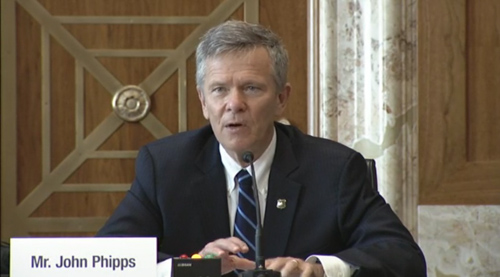
How would the average person or average Senator interpret what John Phipps, Forest Service Deputy Chief for State and Private Forestry, said in response to a question from the Senator from Nevada?
Senator Catherine Masto: (partly unintelligible) …What do you anticipate as the need from the federal partners to increase air tanker support? I know how crucial that is.
John Phipps: We have up to 35 large air tankers. I think it’s important to understand that we have access to in the interagency environment for example the Department of the Interior has 100 Single Engine Aircraft, air tankers, under contract and depending on the situation and the need we have access to that and we are well under way for our planning and preparedness for the upcoming western fire season.
Senator Catherine Masto: Is there anything we can do at the federal level to assist you in that?
John Phipps: Not at this time.
Senator Catherine Masto: That’s good to hear. Thank you.
In other words, there is nothing to see here. Move along.
The average person or average Senator might think, “Holy crap, there are 135 air tankers ready to fight fires today? How could anyone ask for more? This is great!”
And that is why the number of large air tankers on exclusive use contracts has been stuck at 9 to 21 for the last 15 years. The Forest Service says they have three times the air tankers they actually have, they do not need more, Congress accepts their testimony without question, then moves on to another topic.
The truth is far different. And Mr. Phipps knew it. At best he was intentionally misleading the United States Senators. Some may call it lying. Saying “up to 35” could mean anywhere from zero to 35, and is meaningless. The Senators should have called him on this.
Today there are 13 large air tankers on exclusive use contracts. If protests that have been filed do not change anything, after the GAO makes their ruling due by July 15, 2020 there could be 5 more, to bring the total to 18.
A study completed for the Forest Service in 1996 (on page 61) recommended there be 41 large turbine-powered air tankers with a capacity of 3,000 to 5,000 gallons, essentially standards that are now the “next-generation” air tankers used today:
"Twenty P-3A, aircraft, ten C-130B aircraft, and 11 C-130E aircraft. This would provide for a [turbine-powered] fleet that is essentially 75% 3,000 gallon capacity and 25% 5,000 gallon capacity."
Single engine air tankers have their place in the firefighter’s tool box, but 700 to 800 gallons per load is far different from the 3,000 to 19,000 gallons carried by large and very large air tankers.
There are additional large air tankers on Call When Needed contracts signed in December with six companies for a total of 35 aircraft. The number “35” is misleading because most if not all of the 13 to 18 large air tankers on exclusive use (EU) contracts also have CWN contracts, meaning they would be removed from the CWN list. So there might only be 17 to 22 on CWN. And that assumes all could pass the inspections required by this month. In December some of them did not exist as a complete air tanker.
CWN aircraft may or may not be immediately ready during the fire season, with mechanics and crew members available to suddenly drop what they were doing and start flying fires. In 2017 the average daily rate for large federal CWN air tankers was 54 percent higher than aircraft on exclusive use contracts. But CWN costs are charged to the virtually unlimited fire suppression accounts, so the Forest Service does not care about using taxpayer’s dollars in that manner. And they are not held accountable.
I did not see in the hearing any mention of the delays in releasing the Aerial Firefighting Use and Effectiveness Study that has been going on for eight years, but maybe I missed it. (Update: it was not discussed.) Chief Christiansen has been testifying for the last two years before this committee saying it would be released “soon”. When pressed in February by Colorado Senator Cory Gardner, who last year made his opinion about the delay very clear, she said it would be released “this Spring”. Senator Gardner said, “Before June?” She said, “Yes”. I did not see the Senator in today’s hearing. (Update: Senator Gardner was not at the hearing.)

The National Weather Service has issued Red Flag Warnings for June 8 in areas of California, Nevada, Utah, Colorado, Arizona, New Mexico, Oklahoma, and Texas. Most of the areas will experience strong winds and low humidities, resulting in enhanced wildfire danger.
(Red Flag Warnings can be modified throughout the day as NWS offices around the country update and revise their weather forecasts.)
Recent drone photos of the remains of a tree lookout in Oregon

Years ago, in order to detect new ignitions of wildfires, land management agencies occasionally took advantage of tall trees on hilltops, building platforms near the top with ladders or other climbing aids below.
Using his Phantom 3 Pro drone, Steven Stenkamp shot photos of a what remains of a tree lookout on the Deschutes National forest in Central Oregon. Pumice Springs lookout was built in 1930 and used for less than 10 years, Mr. Stenkap said.
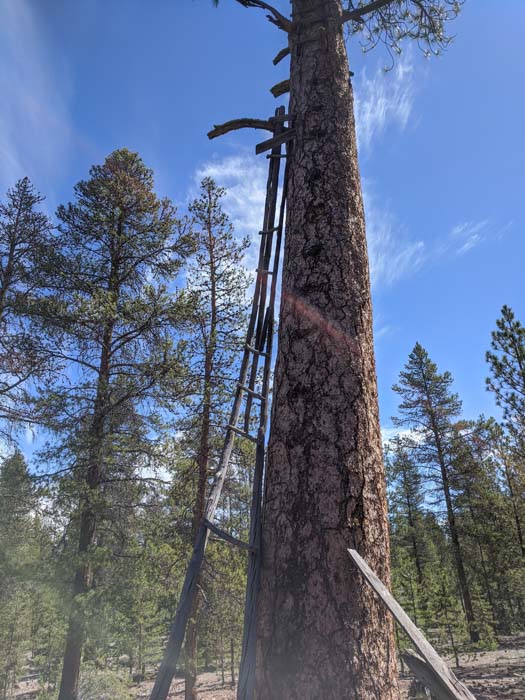
“The Pumice Springs Lookout had a ladder for about 20 feet, then 2 x 4s for about another 10,” Mr. Stenkap told us. “From there, the lookout used branches until he (or she) was about 10 feet from the platform where there was, and still is, another section of ladder. According to the data from the drone the platform is at 81 feet. The lookout was also known as Sand Springs lookout. The tree is just about equal distance from each of those springs.”

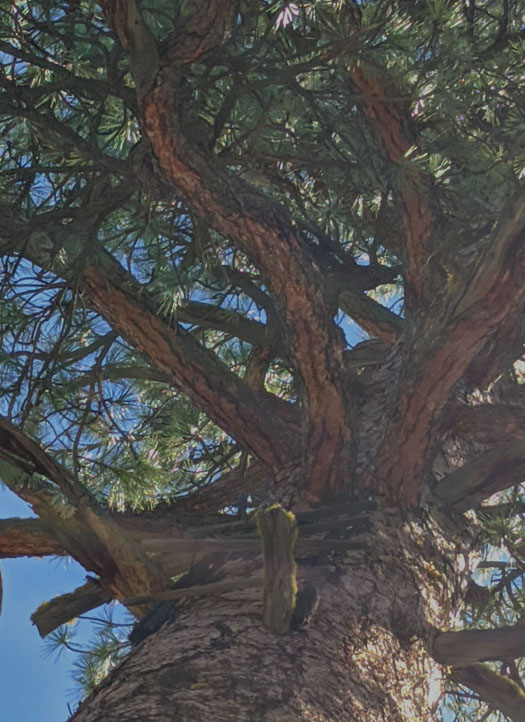

Before he retired, Mr. Stenkap’s duties at the Bend Fire Department in Oregon included flying a DJI Phantom 3 Pro drone.
When the Senate Energy and Natural Resources Committee holds their hearing at 10 a.m. EDT June 9, 2020 on “Wildfire Management in the Midst of COVID-19” neither U.S. Forest Service Chief Vicki Christiansen or Fire and Aviation Director Shawna Legarza are slated to be present. Usually the Chief testifies at hearings about the Forest Service, and since Ms. Legarza testified last year at a hearing about expectations for the fire season, there was speculation that she would attend this one as well.
It is likely that the Senators will ask about the results from the Aerial Firefighting Use and Effectiveness Study that has been going on for eight years. Chief Christiansen has been testifying for the last two years before this committee saying it would be released “soon”. When pressed in February by Colorado Senator Cory Gardner, who last year made his opinion about the delay very clear, she said it would be released “this Spring.” Senator Gardner said, “Before June?” She said, “Yes.”
I asked Ms. Legarza by email why she was not going to testify, and she replied, “Normally the Fire Director does not testify. Last year was the first time ever. Was a great experience. I am very appreciative of all the work the committee has done while I have been in this job.”
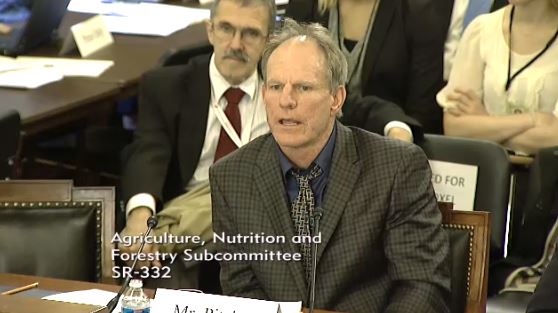
A quick search of Wildfire Today found two examples of former Fire Director Tom Harbour attending congressional committee hearings. On October 17, 2011 he testified before a subcommittee of the House of Representatives’ Homeland Security committee at a field hearing in Austin entitled “Texas Wildfire Review: Did Bureaucracy Prevent a Timely Response?” On November 5, 2013 he sat directly behind the witnesses but did not testify at a hearing before the Senate Subcommittee on Conservation, Forestry and Natural Resources titled, “Shortchanging Our Forests: How Tight Budgets and Management Decisions Can Increase the Risk of Wildfire”.
I obtained from a Washington insider the list of government employees who ARE slated to testify Tuesday:
Some of the Senators and witnesses may appear virtually instead of in person. The current Senate rules during the pandemic do not allow spectators at committee meetings or hearings.
For Throwback Thursday I found a good news story — much needed during these turbulent times. Published March 21, 2015, it feels like it was a thousand years ago:
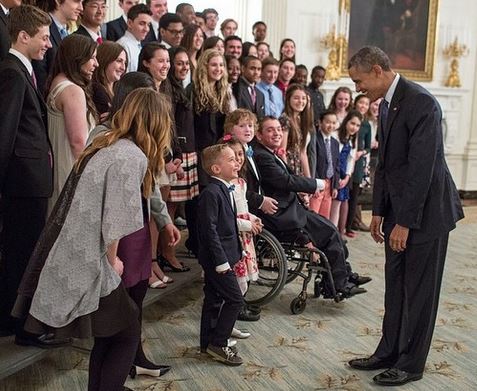
The six-year-old son of a wildland firefighter was one of 15 filmmakers to be invited to show a video at a film festival at the White House. Noah Gue worked with his father, Michael Gue, a firefighter with the U.S. Forest Service in Bozeman, Montana, to make the film to help raise awareness of climate change and inspire conservation. Noah’s parents produced the film in which he is the on-screen narrator. He also got a credit for editing. The film was selected to be shown Friday at the second White House Student Film Festival.
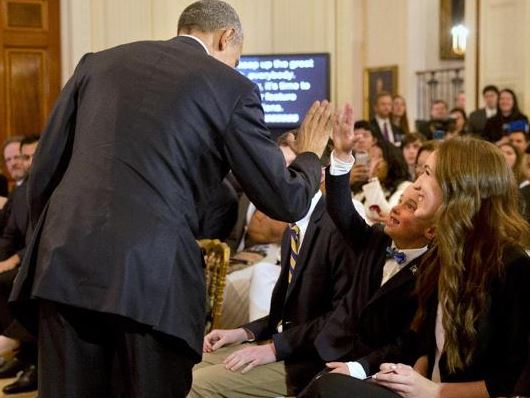
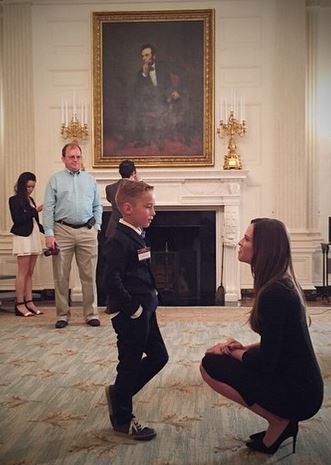
The fact that Noah had a loose front tooth did not escape the notice of President Obama who mentioned it in his opening remarks at the event. Here are some excerpts from the official transcript:
Thank you so much, everybody! Have a seat. Well, hello, everybody, and welcome to the second annual White House Film Festival. (Applause.) It’s like the Sundance or Cannes of film festivals that are open to the public through a government website. (Laughter.) It may also be the only film festival where one of the entrants has his tooth loose. (Laughter.) And may pull it out right here at the ceremony. (Laughter.)
[and later]
…Today, we’re celebrating a 6-year-old in Montana. Is that you? (Applause.) He’s the guy without — he’s missing teeth. (Laughter.) But he’s also challenging us to see conservation through a child’s eyes…
Noah’s father, Michael, is a prolific photographer, as is his wife who is a wedding photographer. We have featured Michael’s fire pictures a couple of times on Wildfire Today, HERE and HERE. His Instagram account has over 7,000 followers…
Congratulations to Noah and Michael!